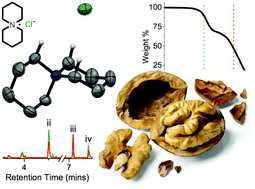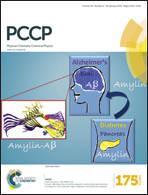Azoniaspiro salts: towards bridging the gap between room-temperature ionic liquids and molten salts†
Abstract
In a continued effort to improve the suitability of ionic liquids in applications operating at raised temperatures, novel spirocyclic ‘azoniaspiro’ salts (with cations derived from five-, six-, seven- and eight-membered rings) are prepared and characterised. The structural and thermal properties of these salts are compared against those of established analogues. The stable geometries and ion pairing behaviour of these species are investigated via a combined experimental/computational approach, employing X-ray crystallography and Density Functional Theory (DFT) methods. Subsequently, the thermal stabilities of these organic salts are characterised and compared using a broad range of techniques. Hyphenated Thermogravimetry-Mass Spectrometry investigations enable complex mechanisms underlying thermal decomposition to be elucidated. Lastly, transition state structures are optimised, corresponding to plausible decomposition mechanisms of the azoniaspiro salt, 6-azoniaspiro[6.5]dodecanium chloride, and one prototypical monocyclic species 1-butyl-1-methylpiperidinium chloride, using DFT. The observed improved thermal stabilities of the azoniaspiro salts, and their potential higher-temperature stable-liquid ranges, render them promising candidates for future ionic liquid applications.



 Please wait while we load your content...
Please wait while we load your content...